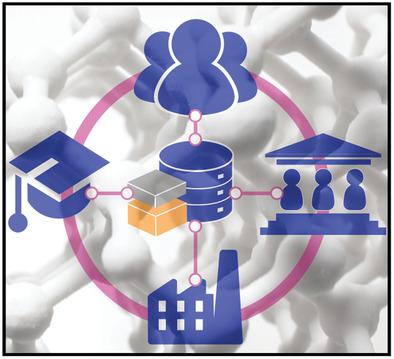Our official English website, www.x-mol.net, welcomes your
feedback! (Note: you will need to create a separate account there.)
Data-Driven Materials Science: Status, Challenges, and Perspectives.
Advanced Science ( IF 14.3 ) Pub Date : 2019-09-01 , DOI: 10.1002/advs.201900808 Lauri Himanen 1 , Amber Geurts 1, 2, 3 , Adam Stuart Foster 1, 4, 5 , Patrick Rinke 1, 6
Advanced Science ( IF 14.3 ) Pub Date : 2019-09-01 , DOI: 10.1002/advs.201900808 Lauri Himanen 1 , Amber Geurts 1, 2, 3 , Adam Stuart Foster 1, 4, 5 , Patrick Rinke 1, 6
Affiliation

|
Data-driven science is heralded as a new paradigm in materials science. In this field, data is the new resource, and knowledge is extracted from materials datasets that are too big or complex for traditional human reasoning-typically with the intent to discover new or improved materials or materials phenomena. Multiple factors, including the open science movement, national funding, and progress in information technology, have fueled its development. Such related tools as materials databases, machine learning, and high-throughput methods are now established as parts of the materials research toolset. However, there are a variety of challenges that impede progress in data-driven materials science: data veracity, integration of experimental and computational data, data longevity, standardization, and the gap between industrial interests and academic efforts. In this perspective article, the historical development and current state of data-driven materials science, building from the early evolution of open science to the rapid expansion of materials data infrastructures are discussed. Key successes and challenges so far are also reviewed, providing a perspective on the future development of the field.
中文翻译:

数据驱动的材料科学:现状、挑战和前景。
数据驱动型科学被誉为材料科学的新范式。在这个领域,数据是新的资源,知识是从材料数据集中提取的,这些数据集对于传统的人类推理来说太大或太复杂——通常是为了发现新的或改进的材料或材料现象。包括开放科学运动、国家资助和信息技术进步在内的多种因素推动了它的发展。材料数据库、机器学习和高通量方法等相关工具现已成为材料研究工具集的一部分。然而,阻碍数据驱动型材料科学进步的挑战多种多样:数据准确性、实验和计算数据的整合、数据寿命、标准化以及工业利益与学术努力之间的差距。在这篇透视文章中,讨论了数据驱动型材料科学的历史发展和现状,从开放科学的早期演变到材料数据基础设施的快速扩展。还回顾了迄今为止的主要成功和挑战,为该领域的未来发展提供了展望。
更新日期:2019-09-03
中文翻译:

数据驱动的材料科学:现状、挑战和前景。
数据驱动型科学被誉为材料科学的新范式。在这个领域,数据是新的资源,知识是从材料数据集中提取的,这些数据集对于传统的人类推理来说太大或太复杂——通常是为了发现新的或改进的材料或材料现象。包括开放科学运动、国家资助和信息技术进步在内的多种因素推动了它的发展。材料数据库、机器学习和高通量方法等相关工具现已成为材料研究工具集的一部分。然而,阻碍数据驱动型材料科学进步的挑战多种多样:数据准确性、实验和计算数据的整合、数据寿命、标准化以及工业利益与学术努力之间的差距。在这篇透视文章中,讨论了数据驱动型材料科学的历史发展和现状,从开放科学的早期演变到材料数据基础设施的快速扩展。还回顾了迄今为止的主要成功和挑战,为该领域的未来发展提供了展望。





















































 京公网安备 11010802027423号
京公网安备 11010802027423号